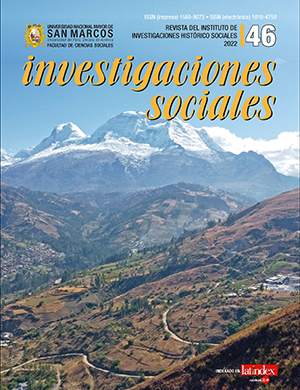Quinine, the richness of Peru’s flora. The construction of a national imaginary from a regional element
DOI:
https://doi.org/10.15381/is.n46.22814Keywords:
quinine, Peru, national imaginary, nation, regiónAbstract
Quinine and its exploitation during the second half of the 18th century are examples of how national representations and imaginaries are built and rebuilt at a given moment. During this time, quinine became a flagship product in the north of Peru’s viceroyalty, considered a defining element of the Peruvian national coat of arms. In the middle, there were system changes that historically favor independence, supposing the construction of a new type of human relations (modernity) that the republic, the nation, and the nation-state entail. We analyze and outline its demand in the 18th-19th century for what would later become known as a commodity (20th century) and the insertion of social agents in a European international consensus from a market that allows participation in a liberal capitalist system under construction. By 1800, in the locality, the region, the nation, South America, and finally, the international space, situations of economic realization were insinuated in terms of the construction of an international market that became visible over time until reaching the contemporary global apogee.
Downloads
Published
Issue
Section
License
Copyright (c) 2022 Susana Aldana Rivera

This work is licensed under a Creative Commons Attribution 4.0 International License.
AUTHORS RETAIN THEIR RIGHTS:
a. Authors retain their trade mark rights and patent, and also on any process or procedure described in the article.
b. Authors retain their right to share, copy, distribute, perform and publicly communicate their article (eg, to place their article in an institutional repository or publish it in a book), with an acknowledgment of its initial publication in Investigaciones Sociales.
c. Authors retain theirs right to make a subsequent publication of their work, to use the article or any part thereof (eg a compilation of his papers, lecture notes, thesis, or a book), always indicating the source of publication (the originator of the work, journal, volume, number and date).






